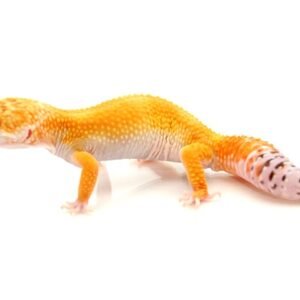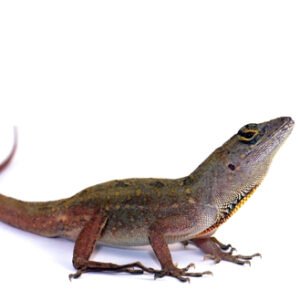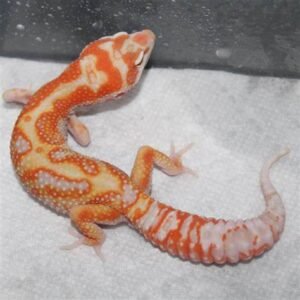The Fascinating World of Blue Bearded Dragons: Care, Habitat, and More
Introduction to Blue Bearded Dragons
Blue bearded dragons are a captivating subset of the Central Bearded Dragon species, scientifically known as Pogona vitticeps. These unique reptiles have garnered considerable attention within the reptile enthusiast community due to their striking blue hue, setting them apart from other common morphs. The origin of the blue coloration in bearded dragons can be traced back to selective breeding practices aimed at enhancing this distinct trait. Initially, bearded dragons displayed a range of colors, including browns, tans, and oranges. However, breeders began to cultivate individuals exhibiting a blue color variant, resulting in the popular blue bearded dragon morph seen today.
The physical characteristics of blue bearded dragons closely resemble their traditional counterparts. Adult blue bearded dragons typically reach lengths of 18 to 24 inches, featuring a robust, flattened body, a broad triangular head, and a distinct beard, which can puff up when threatened or stressed. The stunning blue color is primarily found on their bodies, which may be paired with various other colors, resulting in beautiful gradients. This unique coloration is not just a visual appeal but also hints at the intricate genetics involved in the breeding of these reptiles, reflecting a synthesis of art and biology.
The growing popularity of blue bearded dragons can be attributed to several factors. Many reptile enthusiasts appreciate the rarity and aesthetic appeal of these morphs, while others are drawn to their relatively docile nature and ease of care. For pet owners, they offer an engaging and dynamic addition to any home. Compared to their more common counterparts, blue bearded dragons often captivate audiences at reptile shows and exhibitions, showcasing their enchanting presentations. Overall, the blue bearded dragon morph stands out, not only due to its color but also its unique attributes that enchant both experienced and novice reptile keepers alike.
Habitat and Environmental Needs
The blue bearded dragon (Pogona major) thrives in specific environmental conditions that closely resemble its natural habitat. Understanding these needs is crucial for creating a conducive living environment that promotes the health and wellbeing of this unique reptile. To begin with, temperature control is essential; the enclosure should have a temperature gradient ranging from 95°F to 100°F (35°C to 38°C) in the basking area, while a cooler side should maintain a temperature of around 75°F to 85°F (24°C to 29°C). This gradient allows the blue bearded dragon to thermoregulate effectively, which is vital for its metabolic functions.
Humidity levels are another critical factor in setting up the habitat correctly. Blue bearded dragons require a humidity level of approximately 30% to 40%. Excessive humidity can lead to respiratory issues, while too little can result in dehydration. To monitor and maintain humidity, owners should consider using hygrometers and misting the enclosure periodically, especially during shedding periods to aid the process.
The substrate used in the enclosure also plays a significant role. Appropriate substrates include reptile carpet, paper towels, or a sand mixture that can imitate their natural environment while preventing impaction risks. Avoid using loose sand or substrates that can be ingested, as these can lead to serious health problems.
In addition to temperature, humidity, and substrate, proper lighting is paramount. Blue bearded dragons require ultraviolet light (UVB) to synthesize vitamin D3, crucial for calcium absorption. Bringing in basking spots with appropriate lighting not only replicates their natural habitat but also encourages healthy activity and behavior. It is essential for owners to avoid common pitfalls, such as inadequate heat sources, inappropriate substrate choices, and lack of UVB exposure, which can lead to a range of health issues. A well-maintained habitat is the foundation for a thriving blue bearded dragon.
Diet and Nutrition for Optimal Health
Blue bearded dragons, known for their vibrant appearance and adaptable nature, require a well-balanced diet to maintain optimal health throughout their lifespan. Their diet is largely insectivorous, complemented by a variety of vegetables and necessary dietary supplements. A proper understanding of their nutritional needs is essential for longevity and vitality. The primary sources of protein in their diet include live insects such as crickets, mealworms, and dubia roaches. These protein sources should constitute approximately 60-80% of their overall diet, especially during their juvenile phase when growth is rapid.
In addition to protein, a myriad of vegetables should make up the remaining portion of their meals. Leafy greens like collard greens, kale, and dandelion greens are ideal choices, while other vegetables like grated carrots or bell peppers can offer additional vitamins and minerals. It’s crucial to ensure that vegetables are fresh and chopped into manageable sizes to facilitate digestion. Furthermore, a calcium supplement is a necessary addition to their diet, particularly during the growing phase, to prevent metabolic bone disease.
A recurring schedule is essential for feeding blue bearded dragons. Generally, juveniles require more frequent feedings, ideally every day or every other day, while adults may only need to be fed every few days, adjusting portions accordingly. Overfeeding can lead to obesity, while underfeeding can result in malnutrition. In addition, it’s essential to monitor for dietary mistakes such as feeding insects that are too large or providing an incorrect ratio of protein to vegetation. Recognizing these issues early can prevent common health problems linked to poor dietary practices. Ensuring an optimal diet helps support a blue bearded dragon’s long-term health and overall wellbeing, making proper nutrition an indispensable aspect of their care.
Behavior, Handling, and Care Tips
Blue bearded dragons, or Pogona vitticeps, exhibit a range of fascinating behaviors that are essential for owners to understand. These reptiles are often known for their calm demeanor; however, each individual may exhibit different social behaviors based on their environment and personal temperament. Blue bearded dragons can form strong bonds with their handlers, which enhances the human-animal interaction experience. Recognizing key signs of stress or discomfort is paramount for any pet owner. If your blue bearded dragon displays excessive puffing of the beard, lethargy, or avoidance behavior, these could indicate that the animal is feeling threatened or unwell.
Effective handling of blue bearded dragons begins with gentle introductions. It is advisable to pair handling sessions with positive reinforcement, such as treat rewards, to instill a sense of trust. Remember to support their bodies fully when lifting them; a critical practice that promotes the creature’s security during interaction. Over time, your blue bearded dragon will become accustomed to handling, leading to a more enjoyable pet experience.
In terms of care, maintaining a proper habitat is essential for ensuring your blue bearded dragon thrives. Their environment should mimic their natural habitat as closely as possible, including appropriate heating, lighting, and humidity levels. Regular health monitoring is also vital; check for signs of illness such as changes in appetite, lethargy, or abnormal fecal matter. Grooming should not be neglected; regular bathing can aid in shedding and skin health. The integration of regular vet check-ups ensures that your blue bearded dragon remains in optimal health.
As a responsible pet owner, it is crucial to educate yourself about the unique needs of blue bearded dragons. By understanding their behaviors and implementing proper care techniques, you can contribute to a happy, healthy life for your reptilian companion.





